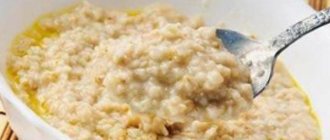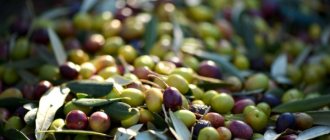How to choose potatoes
There are more than four thousand varieties of this root vegetable in the world , each differing in taste, ripening time, size and color of the tubers.
The lower the starch content, the tastier the fruit . The amount of starch decreases due to the duration of ripening, so early varieties contain more of it.
An important indicator of taste is the density of the pulp . Mostly on products imported from abroad, you can see the D markings, which correspond to different degrees of density - from the lowest starch content (A) to the highest (D).
White varieties contain a lot of vitamin C, are rich in starch, juicy, and easy to boil. Yellow varieties that contain a lot of carnitine and have a sweetish taste are also pleasant to the taste.
Delicate taste, long shelf life, rich in antioxidants - all this is inherent in red varieties. They also retain their shape and do not crumble during cooking.
Many people prefer large fruits because of convenience, but it is better to buy small tubers containing more nutrients.
Potatoes should not be green, have spots or sprouts. The tubers should be firm and elastic to the touch.
FACT 2
But - wait a minute to run to the refrigerator if you have a tendency to be overweight. Meta-study (2) will cool your ardor. Daily consumption of 1 serving of baked or boiled potatoes (our sacred 150 g) leads to an increase in weight by an additional 260 g for every 4 years. It doesn’t seem like much, but over 40 years you will gain an additional 2.6 kg. almost out of the blue. And if baked and boiled potatoes are replaced with deep-fried potatoes, then the additional gain over 4 years will be 1.52 kg. Something sad to think about!
Composition and energy value of raw, baked and fried root vegetables
There are only 77 kcal per 100 g of raw product . When cooked, its calorie content increases by only 3 kcal and amounts to 80 kcal.
It is better to count calories in grams.
Tuber sizes range from 20 to 200 g. Potatoes are a carbohydrate product.
100 grams of raw root vegetables contain more than 16 g of carbohydrates , and the content of proteins and fats does not exceed 2 grams.
The glycemic index is low, depending on the cooking method.
The index of boiled potatoes does not exceed 70 , but for fried or baked potatoes the index can jump to 95.
The main conclusion suggests itself: it’s all about the method of preparation.
FACT 1
First, let's look at how eating potatoes affects your risk of death from all causes (Graph A).
Graphic arts.
The number “1” on the vertical axis is the risk of death for people who do not eat potatoes. At all. Never. Yes, there are such things. Sometimes. The two dashed lines represent the risk of death for different people: for some it is higher, for others it is lower. The solid line is the average risk of dying depending on how many potatoes the average eater eats.
As you can see, eating potatoes is not a particularly deadly trick: in quantities up to about 150 grams per day, the risk of death is reduced. The truth is very little - only 1-2%, and then it starts to grow.
This same 150 g/day can be taken as a safe amount for the average eater.
General beneficial properties for humans
The fruits contain a large number of substances useful to humans. The main value is vitamins C and B6 , minerals: potassium, cobalt, copper. How can the fruits of this root vegetable be useful?
- Thanks to vitamin B6, the immune system is maintained and strengthened . It also has a beneficial effect on the nervous system, stimulates and accelerates metabolism.
- Vitamin C strengthens the immune system, making it more resistant to infections. Helps absorb iron.
- Potassium contained in fruits regulates blood pressure.
FACT 8
So, the glycemic content of potatoes (as well as its deliciousness) increases significantly with increasing weight of the tuber [3].
Schedule.
So don’t be lazy: we buy the smallest one on the market. By the way, it will be cheaper (but this is until the market grannies find out about its usefulness). The glycemic index of new potatoes is also low. But there are a lot of useful things in it. So small young potatoes are the best thing ever - they are tasty, healthy, and harmless!
What are the benefits for the body of adults and children?
For adult men and women, potatoes should be a staple food. It meets the physiological needs of an adult ; it is a comprehensive food product for proper nutrition.
Its inherent high starch content is an important source of energy . Starch has a positive effect on the condition of the large intestine, preventing the development of cancer.
What are the benefits of potatoes for children under one year old? Starting from 5-6 months, you can give potatoes to children as complementary foods. Dishes made from this root vegetable are delicious, and the risk of an allergic reaction is minimal.
But in the event of a sudden allergy, it is worth completely eliminating all complementary foods . The greatest likelihood is that the problem is not in the potatoes, but in the development of a reaction to complementary foods. You should consult a doctor immediately.
In old age, potatoes should be constantly included in the diet. The potassium needed by older people is found in large quantities in fruits. It is enough to consume three hundred grams of this root vegetable per day to completely cover the need for potassium.
The protein contained in the fruit is similar in composition to animal protein . Potatoes compensate for the lack of protein that appears when there is not enough meat in the diet.
Potatoes are a hypoallergenic product , so they are suitable for people prone to allergies. Starch and protein are the main triggers, but potato allergies are very rare. It is even prescribed as the main component of the diet to people suffering from allergic diseases.
The risk is also associated with the so-called cross-reaction with allergies to pollen, peppers, tomatoes or eggplants. Then the consumption of all representatives of the nightshade family, to which potatoes belong, is limited.
For athletes, potatoes are a good way to replenish expended energy . It contains practically no fats, and the carbohydrates in its composition are predominantly complex. The product is low-calorie.
Many nutrition experts consider this root vegetable an unsuitable food due to its relatively high glycemic index, but this factor is not important for athletes. And just one potato, eaten an hour before the intended workout, will maintain strength during sports.
People with diabetes should be especially careful about their diet, but there is no generally accepted opinion about the benefits or harm of potatoes.
Its danger is its high level of polysaccharides, which is dangerous for diabetics. But you shouldn’t completely exclude this healthy product from your diet.
Nutritionists agree on one thing: diabetics should limit their consumption of this root vegetable, and not all cooking methods are suitable. Cooking potatoes in animal fat can be dangerous for diabetics. Potatoes boiled in their skins are useful.
On the pages of our website you will also learn about the dangers and benefits of Jerusalem artichoke - a unique vegetable, a close relative of potatoes!
In the next article we will talk about the beneficial properties of daikon, the use of the root in cooking and traditional medicine.
Is sauerkraut good for weight loss? Read about the healing qualities of this product in this material:.
FACT 7
But the risk of colorectal cancer when eating potatoes increases by 20% from 150 g/day and by 25% if you eat 200 g/day (Graph D). Potatoes increase the risk of other types of cancer slightly. And with that, a big thank you to her!
Schedule D.
In general, we go, get examined, examine the medical records of our closest relatives to see if they have the above-mentioned diseases and decide whether we are entitled to 150 grams of potatoes per day, or not (on the plate).
For those who would rather forget about potatoes, don’t read the second part of the article at all. And with the lucky few remaining, we will find out which potatoes are best to choose and how best to cook them.
THE HARMFULNESS OF POTATOES lies in its high glycemic content. I explain in detail what it is and what it is eaten with in the article here.
Briefly: glycemic content is a measure of how quickly and strongly a particular food raises blood sugar levels. The glycemic index was introduced not by vampires (lovers of sweet blood), but by doctors: the higher the glycemic content of food, the greater the risk of various diseases and excess weight.
Is it harmful to health, main contraindications
In addition to beneficial qualities, potatoes have harmful properties. The main danger for everyone is green potatoes . Its use is contraindicated due to the dangerous poison solanine, an excess of which can lead to dire consequences including death.
Problems with the pancreas can appear if you overuse dishes with potatoes. People with low stomach acidity should not eat this
Potatoes can aggravate urolithiasis, flatulence, and gastrointestinal diseases.
Recommendations for use
that the average person consume no more than 300 g per day .
This daily norm is ideal to fully provide the body with carbohydrates, phosphorus and potassium.
If the daily dose is frequently exceeded, there is a risk of developing hypertension and hypertension.
Although side dishes containing potatoes are usually eaten during dinner, they are best consumed before noon.
The fruits of this root vegetable are heavy food and require time to digest.
In what form are potatoes healthier? The healthiest cooking solution is boiling.
Boiled fruits in their jackets contain the lowest glycemic index and retain the greatest amount of nutrients than fried or baked ones.
Use in cooking: preparing vegetable dishes
Potatoes are an integral component of many soups, salads, and the main side dish for many dishes. There are hundreds of recipes for preparing this root vegetable.
Country style
Ingredients:
- young potatoes - 6 pieces;
- seasoning or spices - to your choice;
- vegetable oil - 5 tablespoons;
- breadcrumbs - 5 tablespoons;
- pepper, salt - to taste.
The washed, peeled tubers are cut into slices, mixed with oil, spices, breadcrumbs, pepper and salt, and placed on a baking sheet. Bake until done, until the crust turns golden , at a temperature of 180-200 degrees.
Raw potatoes
The contraindications of potato juice and its benefits have been discussed above. However, an equally useful component is the pulp of the fresh vegetable, which remains after squeezing. The fact is that it has excellent anti-inflammatory properties. It will also help well with burns and wounds. Vegetable pulp will relieve inflammation well. And any wound will heal faster with such a compress.
Raw potatoes also help in the process of self-care. For example, many representatives of the fair sex know the results obtained from applying raw potatoes to the blue circles under the eyes - they disappear literally after 10 minutes.
Another benefit of raw potatoes? It contains a lot of zinc and potassium, which the body really needs at any age. Their greatest concentration is in the peel, which, unfortunately, most housewives throw in the trash. In addition, it contains the largest number of components that can help in the absorption of starch by the human body.









